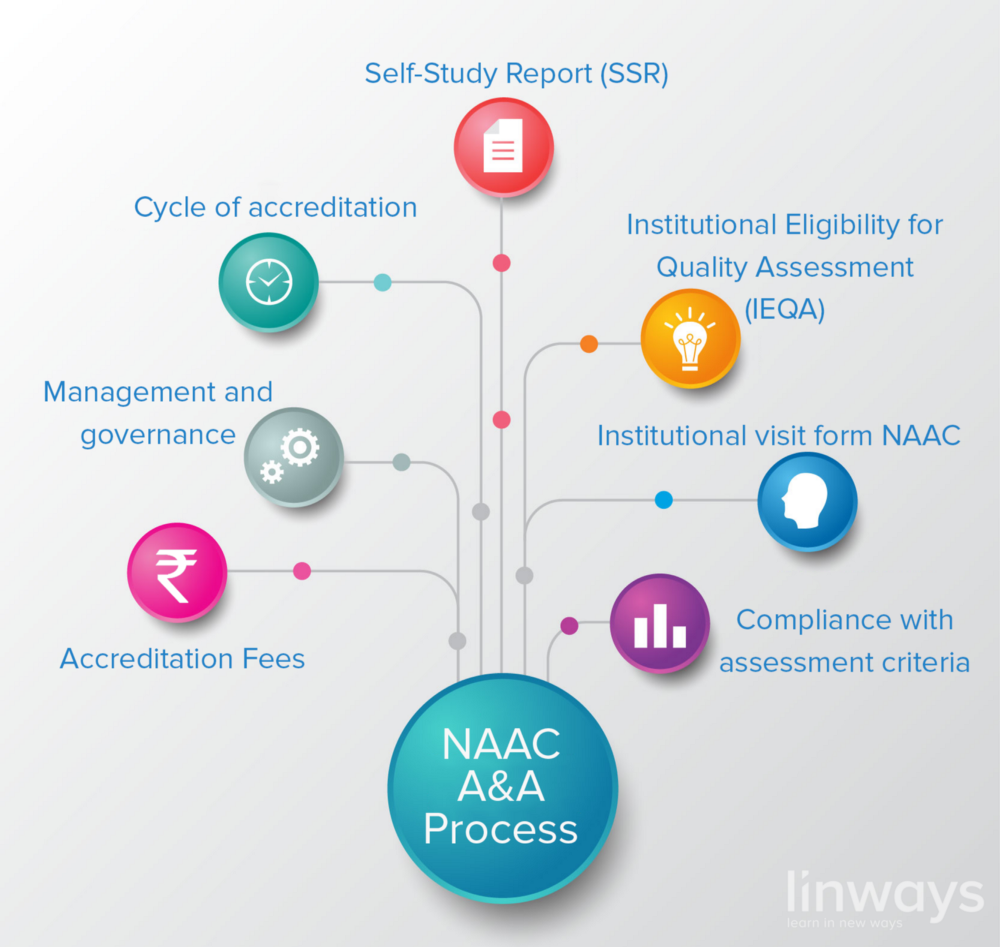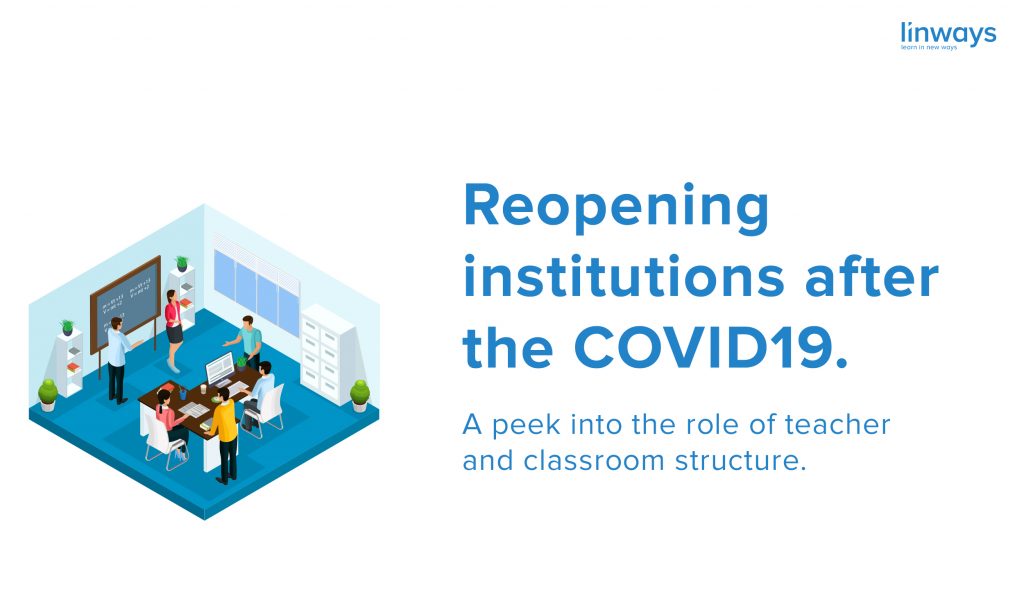
As we mentioned in the previous blog of this series, the NAAC assessment and accreditation are terms broadly used for understanding the “Quality Status” of an institution. The NAAC’s accreditation process follows a holistic, systematic, and objective approach for institutional improvement. Moreover, the assessment process provides an opportunity for the institution to;
- measure its effectiveness and efficiency,
- identify its strengths and weaknesses and
- take necessary steps for improvement.
Now let us move forward to carefully learn how the NAAC SSR is prepared and how it helps the institution to assess itself. But before that, let’s take a quick peek into the process of accreditation.
Timeline of the process of Assessment and accreditation
- The Higher Education Institutions shall submit the Letter of Intent (LOI) online after uploading the Self-study Report (SSR) on the institutional website.
- LOI will be processed by NAAC and the decision in this regard is usually communicated within 15 days. The institution should submit the registration fee (demand draft) so as to reach NAAC within 10 days of submission of LOI.
- The Institutional Eligibility for Quality Assessment (IEQA) report is to be submitted online within the one week of acceptance of LOI.
- The Institution can submit the Self-Study Report (SSR) within two weeks of acceptance of LOI / IEQA.
- NAAC will decide on the dates of visit and constitute the teams to visit the institution within three weeks of receipt of SSR.
- The visit is ordinarily completed within one month.
If the NAAC finds any deficiency in the Letter Of Intent (LOI), it will be rejected. If so, the institution will have to re-submit the LOI along with the registration charges again. However, the fee submitted will not be refunded by NAAC. so, the institutions have to take utmost care while preparing the Letter Of Intent (LOI), Self-Study Report (SSR), Institutional Eligibility for Quality Assessment (IEQA) etc.
This leads us to the next point of interest-
Preparation of the Self-Study Report (SSR)
The most important step in the process of assessment and accreditation is the preparation of the SSR by the institution. Institutions should follow the guidelines provided by NAAC while preparing the SSR and ensure that it contains the following:
- Evidence of contributing into the core values.
- Evidence of building from the strengths identified by the institution.
- Action taken to rectify the deficiencies recognized by the institution.
- Efforts made by the institution towards quality enhancement.
- Future plans of the institution for enhancing quality.
Each stakeholder of the institution should be kept fully informed and be closely involved in the self-study. The Head of the institution has to play a major role in achieving the objectives of self-evaluation. In order to assist him/her, a Steering Committee consisting of 4 to 6 members can be created to co-ordinate the compilation and analysis of data. This committee could be responsible for organizing the information and data, and preparing a comprehensive NAAC SSR. During the onsite visit of the peer team, the coordinator of the steering committee may also function as an institutional facilitator.

The institution has to adhere to the instructions and formats provided by the NAAC while preparing the SSR and submit a digital/electronic version of it along with
- five hard copies of the SSR(in case of Affiliated/ Constituent/Autonomous colleges)
- eight hard copies of the SSR (in case of Universities).
Structure of the SSR to be submitted to NAAC:
- Preface or cover letter from the Head of the Institution
- Executive Summary- The ‘Strengths Weaknesses Opportunities and Constraints’ (SWOC) analysis of the institution
- Profile of the Institution
- Criteria-wise report –The institution should provide consolidated response for each of the key aspects.
- Inputs from each of the department in the format provided by NAAC. However in smaller colleges where there are no specific departments, the college may use the proforma and provide programme wise details.
A bulky NAAC SSR with too many details and descriptions may result in lack of clarity. Such a report would also lack focus and would generate more information gaps than explanations. Even for a large and complex institution, it is possible to restrict the essential documentation to manageable proportions.
the general instructions for submitting the SSR are;
- The SSR should not exceed 200 pages
- The pages should be of A4 size ,
- Both sides printing,
- Single line space,
- Font size 12 of ‘Times New Roman’ font and
- One and half inches margin on each side of the page.
The departmental inputs could be in addition to the above. Institution has to avoid including ‘Appendices’ into SSR. Appendices can be made available to the Peer Team during the ‘On-site visit’.
The institutions can also use modern technological solutions like Academic Management Systems (AMS) to efficiently manage and analyze the assessment and outcomes.
The accreditation relies upon the extent of compliance of the institution upon the seven criteria. The criteria wise reports and their accomplishments are important to assess the quality and continuous improvement of the institution. This brings out the seriousness and importance of the assessment criteria.
We will, in the coming parts of this series, discuss each of the assessment criteria and see how they contribute in enhancing the quality of the institution. Meanwhile please let us know what you think of this blog in the comments below.



